Recently I had the chance to watch a film and a performance, and these both impressed me very much. They provided me with a lot of food for thought on the role of the arts and life as an artist. These works are not actually related to TYA, though I think they tell me a lot about TYA indirectly, because they are all about terrible situations in which the disadvantaged, such as children, are firstly influenced and then abused.
One is the well-known documentary film titled “The Salt of the Earth”, which portrays the life and art of the Brazilian photographer Sebastião Salgado. With his vivid camera angles he has been exposing the horrible conditions of famine and the refugee situation in Africa and South America. When he felt utterly helpless as an artist or a human being after confronting these disastrous scenes over many years, he went back to his home town and started to plant trees on land which had already been destroyed. He finally turned that wasteland into a forest. It really looked like a miracle. He said he was healed by the land and the earth.
The other is the multidisciplinary performance “Guayabo” by a UK-based Venezuelan emerging artist. It deals with the current situation of her devastated home country, and she shares her acute feelings about her country and prays for safety of her family with the audience, encouraging understanding and participation through various methods of communication such as video clips and an interactive messaging service during the show. Maybe this is the only thing she could do for her family and her country as an artist.
To be honest, these days I’ve frequently frowned upon the fact that the Korean arts are becoming more and more money-driven. I’ve got a bit bored of so-called ‘well-made dramas’ or shiny works of art which sometimes make me murmur, “So, what?” Also I’ve felt tired of and sometimes powerless about the red tape and inherent bureaucracy throughout the actual cultural policies of my country. Those things have made me feel down and kept me suspecting the role of arts and artists. How could we, arts professionals, tackle problematic things like the cut-throat competition between South Korean teenagers, or child poverty under the dictatorship in North Korea? How can the arts improve the situation in Venezuela and what about refugees in Europe? Climate change? Are we really confronting what’s happening now?
I think the master photographer and the young artist might give an on-going answer to these questions. There could also be more answers. I am anxious to see my friends and colleagues to talk deeply about these things in Kristiansand, or anywhere else we may meet. See you there!




